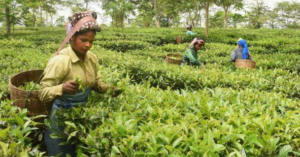|
Getting your Trinity Audio player ready...
|
Cultural heritage is a tapestry woven from the threads of traditions, stories, and values passed down through generations. At the heart of this tapestry lies agri foods – the crops, recipes, and culinary practices that not only sustain our bodies but also carry the essence of our cultural identity.

Sowing Seeds of Identity
Seeds planted by our ancestors bear more than just crops; they hold the essence of our cultural roots. Traditional crops reflect the climatic and soil conditions of specific regions, creating a living record of historical agricultural practices.
Cultivating Culinary Traditions
Agri foods are the cornerstone of culinary traditions that have evolved over centuries. Each region boasts a unique array of dishes that celebrate local ingredients, cooking techniques, and flavors. These dishes transcend mere sustenance; they tell stories of migration, trade, and cultural exchange.
Harvesting Unity and Diversity
Agri foods foster a sense of unity and diversity within communities. Festivals and gatherings centered on specific crops or harvests provide opportunities for people to celebrate their shared heritage while embracing their differences.
Passing Down Wisdom through Recipes
Recipes are the vessels through which cultural heritage is passed down. From the intricate preparation of spices to the art of fermenting foods, agri foods bring people together to learn, share, and create memories.
Sustaining Ecosystems and Traditions
Traditional agri food practices are often deeply intertwined with sustainable agricultural methods. Indigenous farming techniques prioritize the health of ecosystems, ensuring that cultural heritage is not just preserved but sustained.
Agri Foods and Rituals
Many cultural traditions incorporate agri foods into rituals and ceremonies. These foods symbolize prosperity, blessings, and ancestral connections, enhancing the spiritual fabric of communities.
The Threat to Cultural Heritage
In an era of rapid urbanization and globalized food systems, cultural heritage faces significant threats. Loss of traditional crops, declining farming practices, and the erosion of culinary knowledge all contribute to the fading of cultural identity.
Revitalizing Cultural Heritage through Agri Foods
Seed Banks and Preservation: Initiatives to preserve traditional seeds and crops play a pivotal role in revitalizing cultural heritage. Seed banks safeguard genetic diversity and provide communities with access to their ancestral crops.
Community Gardens:
Community gardens offer spaces for people to reconnect with agri foods and cultivate traditions. They foster intergenerational knowledge sharing and provide hands-on experiences for younger generations.
Culinary Workshops and Classes:
Cooking classes and workshops focusing on traditional recipes empower individuals to recreate authentic dishes and keep culinary traditions alive.
Farm-to-Table Movements:
Embracing locally grown agri foods supports small-scale farmers and reestablishes a connection to regional foods. Farm-to-table initiatives foster a deeper appreciation for cultural heritage.
Culinary Tourism and Cultural Exchange
Agri foods have the power to bridge cultures through culinary tourism. Exploring traditional markets, participating in cooking classes, and enjoying authentic meals contribute to the preservation and celebration of cultural heritage.
Agri Foods in the Digital Age
The digital age offers platforms for sharing cultural heritage related to agri foods. Online forums, social media, and websites provide spaces for documenting recipes, sharing stories, and connecting with a global audience.
Sustaining Cultural Heritage for Future Generations
Sustaining heritage through agri foods is an investment in the future. Educating younger generations about the significance of traditional crops and culinary practices fosters a sense of pride and ownership.
The Intersection of Taste and Identity
Cultural heritage extends beyond food; it encompasses language, art, music, and more. However, agri foods hold a unique place in this mosaic, as they intertwine taste, memory, and identity.
Conclusion
Agri foods are not merely sustenance; they are the threads that weave together the fabric of cultural heritage. From the fields to the table, they encapsulate the essence of who we are, where we come from, and the traditions that define us. As we nurture our agri foods, we also nurture our heritage, ensuring that the flavors, stories, and traditions of generations past continue to flourish in the hearts and palates of generations to come.

